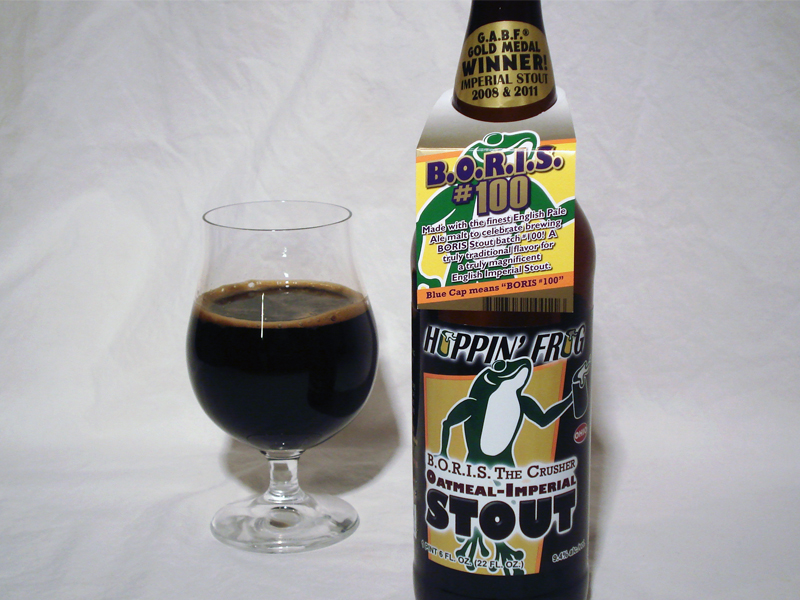100 batches of a quality stout. Congrats to Hoppin’ Frog and Brewmaster Fred Karm. Wanting to do something slightly different in order to celebrate this batch Fred mixed up the grain bill. Using English Pale Ale malt, this beer is going to have a different flavor than than of the original BORIS. This is due to the fact that there are differences in they way malt is kilned giving barley its flavor and color. A blue cap is used to distinguish the #100 batch from other BORIS variations.
The pour was similar to the barrel aged rendition in that while it was on the thicker end of the spectrum, it flowed easier out of the bottle. The head developed quicker and was a darker shade of espresso/mocha than other BORIS beers. It too, faded relatively quickly into the brew which had similar legs that that of the original. The color was in my opinion darker if that is possible.
When it came time for the aroma I was not sure what to expect. Lifting the glass to my nose there was a very evident alcohol heat that rose up to greet me. As compared to the original BORIS, there was a more pronounced astringent bitterness. The oats were still recognizable, but they played second fiddle to the sweeter, smokier presence of the English malt. I must say, this was interesting to experience. I had a sample glass of the original right next to me and the aromas from both differed considerably. While BORIS has a slick, oily, oatmeal character on the nose, the 100th batch heightened the burnt malt qualities and had layers of a smokey kiln effect. It had a slight essence of burnt popcorn as well as salty seaweed. Overall, it was more roasty and astringent in the aroma.
Different in many regards, this beer was knock out. While I don’t think the overall thickness and viscosity of the beer diminished, the stronger burnt malt flavors were quicker to hit the palate than before. The original developed in the latter half of the sip where as this variation hit you right away. There were also sweeter point along the sip making it a full bodied brew. Taking some time to enjoy the glass I realized this beer had similar qualities to that of a Dry Irish stout (i.e., Guinness and Beamish). That burnt barley quality was evident in this beer even though a pale malt was used. In addition, there was also a smokey aspect to this brew in the finish and aftertaste. I was able pick up on the oat quality, but that too seemed muffled behind the smokier malt profile.

